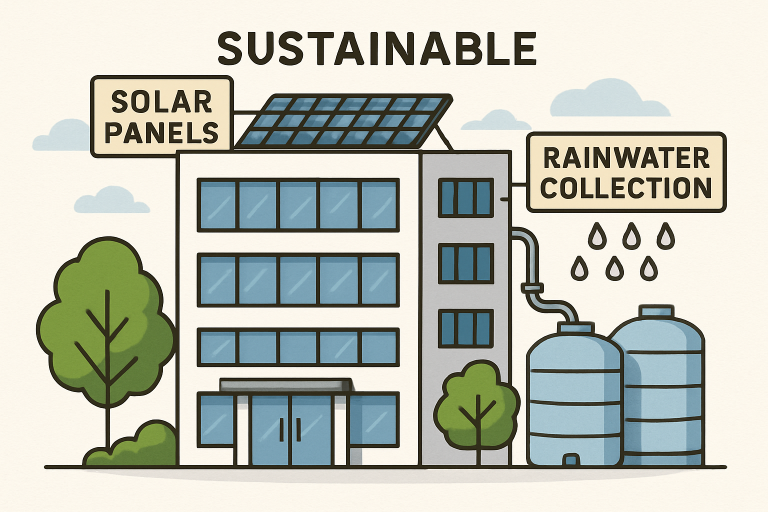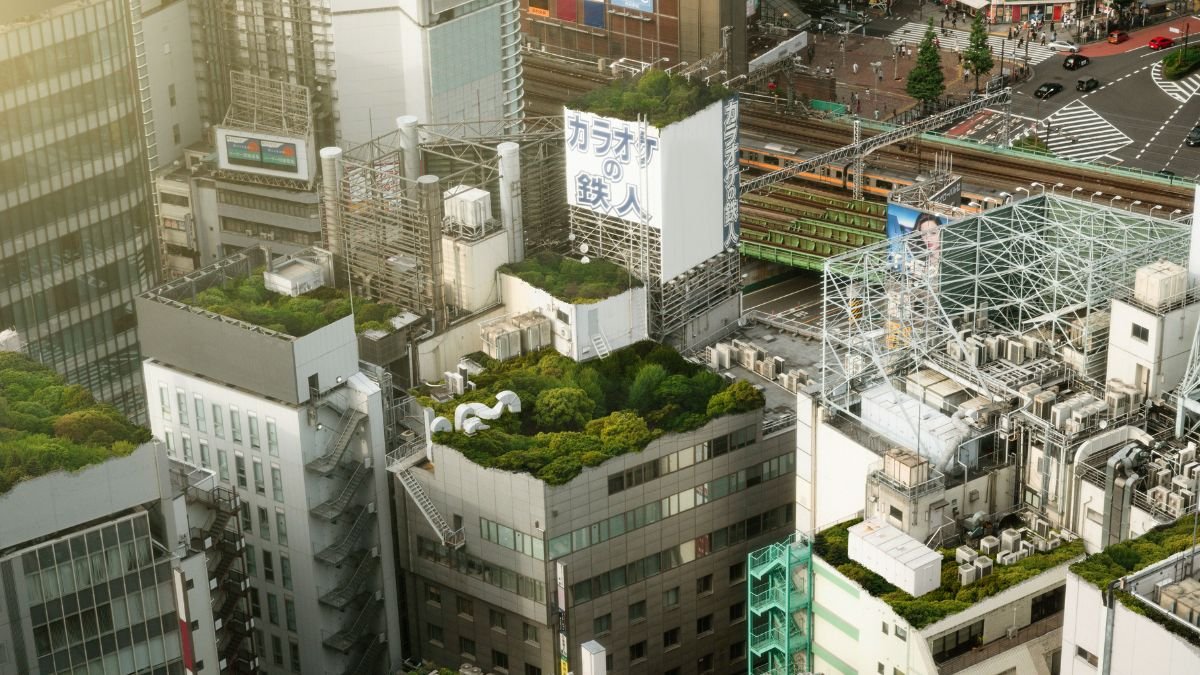Table of Contents
- Introduction
- Green Building Materials
- Energy-Efficient Design
- Water Conservation Strategies
- Smart Building Technologies
- Modular and Off-Site Construction
- Green Roofs and Living Walls
- Certifications and Standards
- Conclusion
Introduction
Commercial construction is transforming significantly as sustainability takes center stage in the industry. Companies are investing in environmentally responsible methods to not only reduce their carbon footprint but to maximize building efficiency and create comfortable spaces for occupants. As many projects seek both environmental and economic benefits, industry leaders are rethinking every step—from materials sourcing to energy systems and beyond. For organizations looking to innovate, design build constructions Maryland represent a holistic approach, streamlining the implementation of sustainable practices and making cutting-edge green solutions accessible across all sectors.
Integrating sustainable practices goes far beyond compliance; it is about contributing to a healthier planet and future-proofing business assets. Through thoughtful development and the adoption of advanced technologies, today’s commercial structures are more resilient, resource-efficient, and capable of offering substantial operational savings over the building lifecycle. These changing priorities reflect a global movement toward responsible construction solutions that benefit businesses, occupants, and communities alike.
Green Building Materials
Construction materials account for a significant share of a building’s carbon footprint, so choosing eco-friendly alternatives is vital to sustainable builds. Recycled steel, for example, eliminates the need for new raw steel production, reducing emissions and energy consumption. Bamboo has emerged as a top renewable option, regenerating to maturity within a few years. Additionally, innovations like low-impact concrete and reclaimed wood allow the industry to minimize landfill waste and promote circularity in construction.
These materials offer enhanced durability without sacrificing style or structural integrity. By opting for high-performance, certified products, builders can also ensure healthier indoor air quality and lower user toxicity, an essential factor as buildings become more airtight and energy-efficient.
Energy-Efficient Design
Reducing operational energy is one of the easiest wins for sustainable buildings. Thoughtful architectural planning can significantly cut energy demands from the outset. Passive strategies—such as optimizing building orientation for sunlight or shading, and prioritizing superior insulation—reduce dependency on artificial heating and cooling.
Modern commercial designs increasingly incorporate advanced HVAC systems and high-efficiency windows that minimize heat transfer. Renewable energy systems, like rooftop solar arrays and geothermal heating, are no longer reserved for flagship projects. They are steadily becoming the norm with supportive policies and cost reductions, helping reduce reliance on fossil fuels and lower annual utility costs for owners and tenants. For an overview of how these innovations scale globally, Architectural Digest provides insights into the latest international green building projects.
Water Conservation Strategies
Water is an increasingly precious resource, and commercial projects are adopting creative ways to conserve and manage it. Leveraging fixtures such as low-flow toilets and faucets can drastically reduce day-to-day water use. Rainwater harvesting systems allow buildings to capture, store, and reuse rainwater for landscaping and non-potable applications, making the most of natural precipitation cycles.

On-site graywater systems reuse gently used water from sinks and showers, further reducing waste. When integrated into construction plans from the beginning, these measures lower both operational costs and the building’s total environmental impact.
Smart Building Technologies
Emerging innovative technologies are revolutionizing building management, allowing operators to optimize energy and water usage around the clock. Automated, sensor-driven lighting and climate systems respond to environmental conditions and occupancy levels in real time, ensuring that resources are consumed only as needed. Centralized energy management systems provide insights into usage patterns, helping facility managers identify and address inefficiencies swiftly.
From advanced air monitoring to predictive maintenance platforms, these digital solutions boost occupant comfort while maximizing a property’s performance. As the demand for intelligent, data-driven design grows, sustainable buildings leverage technology as a cornerstone of their operational strategy. For further information, NRDC guides sustainable building features and how technology reshapes the industry.
Modular and Off-Site Construction
Off-site construction and prefabricated modular methods dramatically change how commercial spaces are delivered. Structurally complete building elements are fabricated indoors, improving quality control and reducing weather delays. This approach means less noise, dust, and traffic at the construction site and significantly reduces wasted materials.
Since building timelines are shorter and logistics are more predictable, modular construction advances sustainability and lends itself to lower costs, tighter budgets, and less disruption for neighboring communities. It’s a win-win for everyone involved, providing industry leaders with reliable, eco-friendly alternatives to traditional processes.
Green Roofs and Living Walls
Green roofs and living walls are increasingly being embraced for their multifaceted benefits. These features help insulate the building, mitigate urban heat, and improve stormwater management by absorbing rainfall. Planted rooftops can provide biodiversity habitats, support urban agriculture, and extend usable space in densely built environments.
Living walls—vertical arrangements of vegetation—are ideal for enhancing interior air quality and aesthetic appeal. Both green roofs and living walls offer a tangible manifestation of a building’s environmental commitment, visibly integrating nature and built form for greater well-being and urban resilience.
Certifications and Standards
Many commercial projects are pursuing green certifications to ensure a structured and credible approach to sustainability. Programs like LEED (Leadership in Energy and Environmental Design) provide a robust framework for designing, constructing, and operating high-performance, healthy buildings. Achieving a recognized standard demonstrates a building’s reduced impact and commitment to environmental stewardship—often boosting market value and long-term operational savings.
Global standards, from WELL Building to BREEAM, ensure consistent best practices and make sustainability more straightforward to evaluate at every project stage. These certifications act as powerful motivators for builders and tenants alike while fostering ongoing industry innovation.
Conclusion
Sustainable practices in commercial construction offer far-reaching advantages—environmental, economic, and social. Strategic use of green materials, energy- and water-saving technologies, modular design, and biophilic features create future-ready, responsible buildings. By embedding these values, commercial projects meet today’s expectations and set new benchmarks for tomorrow, showing a steadfast commitment to both planet and prosperity.
“In a world of instant takes and AI-generated noise, John Authers writes like a human. His words carry weight—not just from knowledge, but from care. Readers don’t come to him for headlines; they come for meaning. He doesn’t just explain what happened—he helps you understand why it matters. That’s what sets him apart.”

